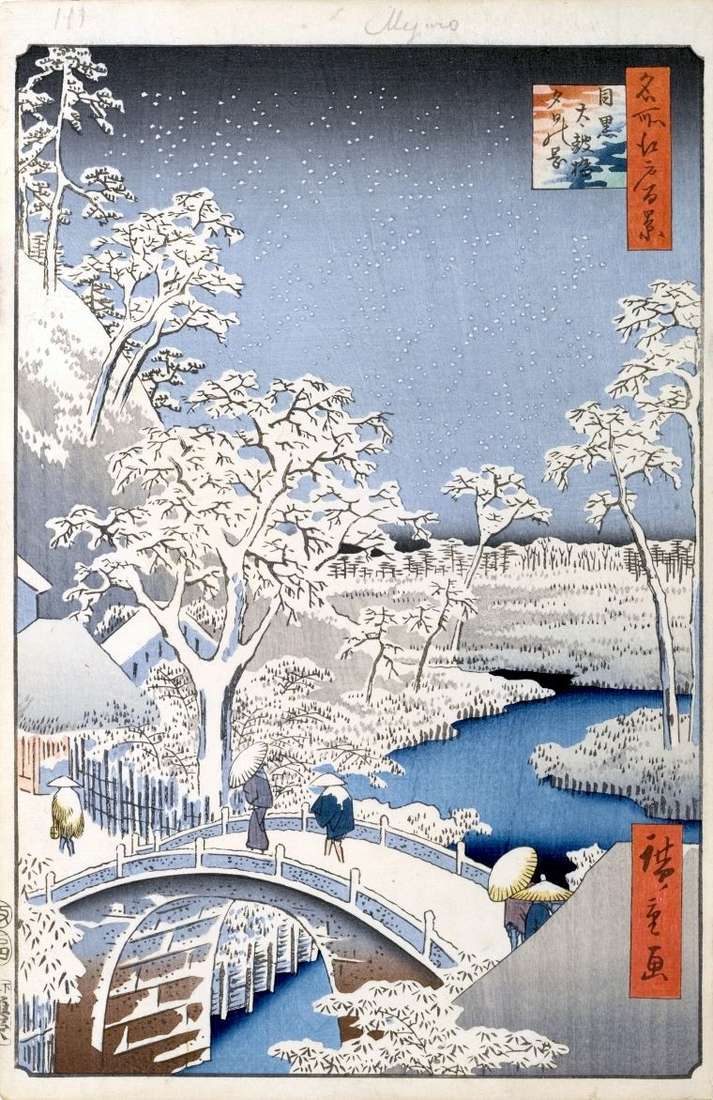
The bridge in the foreground of the engraving is called Oma-kagehasi. It is transferred through the aqueduct of Kanda-jesuy. A small bridge in the background of the engraving is probably Sugatamashi. It leads to the Shinto shrine Hikawa-medzinsya, apparently in the depths of the leaf. It was built by the order of Shogun Tokugawa Yoshimune in 1735. Next to it, to the right was the Buddhist monastery of Nanjenzi, belonging to the Shingon sect, built in the beginning of the 16th century.
Around there were houses of Dzyarib village, which in translation means “Pebble quarry”. Probably, it was built on a pebble terrain. The village is surrounded by extensive rice fields. Almost on the horizon, in front of the wooded hills, the artist painted stylized yellow-pink clouds.
All the details and features of the terrain are transferred to Hiroshige with topographic accuracy and are easily recognizable. Color stylized clouds in the sheet of the late edition is radically changed. Gradual gradation of tones occurs with the distance to the distant plan of engraving from bright pink to dark purple.
 The Regokubasi Bridge and the Okavabat Quay by Utagawa Hiroshige
The Regokubasi Bridge and the Okavabat Quay by Utagawa Hiroshige Tsukudajima Island from the Eitaibashi Bridge by Utagawa Hiroshige
Tsukudajima Island from the Eitaibashi Bridge by Utagawa Hiroshige Rainfall over the bridge of Ohashi, Atake by Utagawa Hiroshige
Rainfall over the bridge of Ohashi, Atake by Utagawa Hiroshige Suidobashi Bridge in Surugaday by Utagawa Hiroshige
Suidobashi Bridge in Surugaday by Utagawa Hiroshige Monastery of Ekoin in Regoku and Moto-Yanagibashi Bridge by Utagawa Hiroshige
Monastery of Ekoin in Regoku and Moto-Yanagibashi Bridge by Utagawa Hiroshige Embankment Koumae by Utagawa Hiroshige
Embankment Koumae by Utagawa Hiroshige Nihonbashi bridge in clear weather after snowfall by Utagawa Hiroshige
Nihonbashi bridge in clear weather after snowfall by Utagawa Hiroshige Yuhinooka hill and Taykobashi bridge in Meguro by Utagawa Hiroshige
Yuhinooka hill and Taykobashi bridge in Meguro by Utagawa Hiroshige